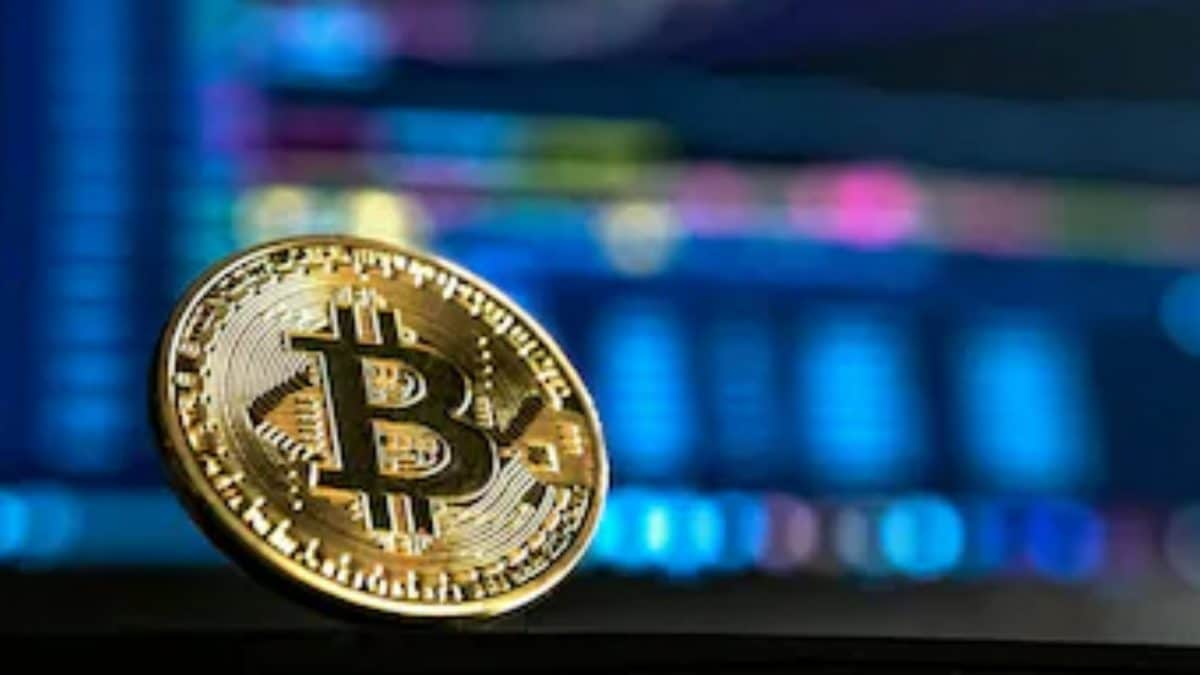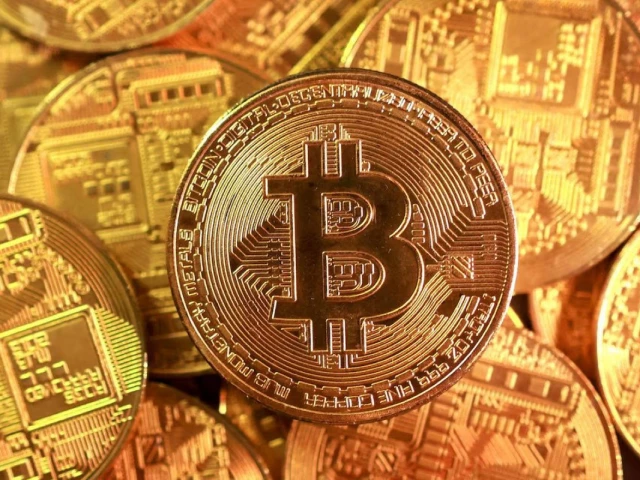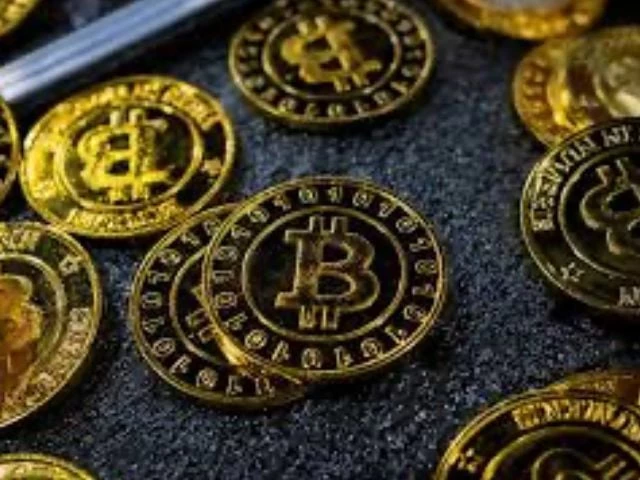Business
Bitcoin Breaks All-Time High Records, Trading Near $125,000; Why Is Cryptocurrency Rising?

Last Updated:
Bitcoin reached a record high of 125000 on Sunday, trading at $124917 with a 1.97 percent gain in the past 24 hours, according to CoinMarketCap.

Representative image
The popular cryptocurrency Bitcoin surged to hit the record high at $125,000 on Sunday. According to CoinMarketCap, the price of Bitcoin was trading at $124,917 with a gain of 1.97 per cent in past 24 hours. Bitcoin price witnessed a sharp spike in the past seven days with a jump of 14 per cent. The market cap of Bitcoin rose 1.88 per cent to $2.48 trillion.
Optimism over potential Federal Reserve rate cut, increased inflows into Bitcoin exchange-traded funds (ETFs), and macroeconomic uncertainties, including the recent US government shutdown, are the major reasons that have prompted investors to put their money into safe assets like Bitcoin.
Digital assets are moving beyond trading instruments and moving towards providing utility as a component of corporate treasury and portfolio allocation, and are increasingly relevant to solving operational inefficiencies in transaction settlement, explained SB Seker, Head of APAC, Binance.
Historically, October is being considered as the best month for Bitcoin in terms of price appreciation. The “Uptober Effect” in Bitcoin refers to a historical pattern where the cryptocurrency tends to see significant price gains during the month of October. Traders and analysts have observed that October has often been one of Bitcoin’s strongest performing months in terms of price appreciation.
The momentum has also led to capital rotation into established altcoins like Ethereum, Litecoin, and XRP, strengthening the broader market. Seasonality further supports this trend, as October, often referred to as ‘Uptober’, has historically been Bitcoin’s strongest month. With September closing on a higher base than usual, the outlook for Q4 remains constructive, supported by the fact that Bitcoin has ended four of the last five quarters in positive territory, said CoinSwtich Market Desk.
Sumit Gupta, Co-founder of CoinDCX said, that while the momentum is exciting, it’s equally important for investors to remain mindful of the market’s inherent volatility. The crypto market rewards those who plan for both the highs and the dips. What’s even more encouraging is that this rally isn’t limited to Bitcoin; Ethereum, Solana, and XRP are also witnessing strong traction, signalling optimism across the broader crypto ecosystem.

Varun Yadav is a Sub Editor at News18 Business Digital. He writes articles on markets, personal finance, technology, and more. He completed his post-graduation diploma in English Journalism from the Indian Inst…Read More
Varun Yadav is a Sub Editor at News18 Business Digital. He writes articles on markets, personal finance, technology, and more. He completed his post-graduation diploma in English Journalism from the Indian Inst… Read More
October 05, 2025, 12:37 IST
Read More
Business
Rail fares to be frozen for first time in 30 years

Rail fares are to be frozen for the first time in 30 years, the Government has announced.
Ministers said the move will save millions of rail travellers hundreds of pounds off season tickets, peak and off-peak returns between major cities.
Commuters on the more expensive routes will save more than £300 a year.
The Government said the changes are part of its plans to rebuild a publicly owned Great British Railways that will deliver value for money through bringing rail tickets into the 21st century with tap in tap out and digital ticketing, alongside investing in superfast wifi.
The announcement applies to England and services run by English train operating companies.
Chancellor Rachel Reeves said: “Next week at the Budget I’ll set out the fair choices to deliver on the country’s priorities to cut NHS waiting lists, cut national debt and cut the cost of living.
“That’s why we’re choosing to freeze rail fares for the first time in 30 years, which will ease the pressure on household finances and make travelling to work, school or to visit friends and family that bit easier.”
Transport Secretary Heidi Alexander said: “We all want to see cheaper rail travel, so we’re freezing fares to help millions of passengers save money.
“Commuters on more expensive routes will save more than £300 per year, meaning they keep more of their hard-earned cash.
“This is part of our wider plans to rebuild Great British Railways the public can be proud of and rely on.”
Ministers said a typical commuter travelling to work three days a week using flexi-season tickets will save £315 a year travelling from Milton Keynes to London, £173 travelling from Woking to London and £57 from Bradford to Leeds.
The freeze will apply to all regulated fares, including seasons, peak returns for commuters and off-peak returns between major cities, benefitting more than a billion passenger journeys said the Government.
The move was warmly welcomed by rail unions and passenger groups.
Mick Whelan, general secretary of the train drivers union Aslef, said: “We are pleased that after 14 years of the Tories pricing people off our railways, this Labour Government is helping people to commute to work and travel for pleasure.
“This is the right decision, at the right time, to help passengers be able to afford to make that journey they need to take, and to help grow our railway in this country, because the railway is Britain’s green alternative – taking cars and lorries off our congested roads and moving people and goods safely around our country in an environmentally-friendly way.”
Alex Robertson, chief executive of passenger watchdog Transport Focus said: “Freezing fares will be extremely welcome news for rail passengers who consistently tell us value for money is their highest priority, alongside trains running on time. It should also make it more attractive for people to use the train more often or for the first time.
“We’ve always recognised there is a difficult balance to strike in how the railway is funded between fares and public subsidy. That makes today’s announcement particularly welcome.”
Eddie Dempsey, general secretary of the Rail, Maritime and Transport union, said: “This freeze is a welcome first step towards better value fares for passengers and shows that Government plans for public ownership of the railways can deliver real tangible benefits for passengers.
“More affordable fares will encourage greater use of public transport, supporting jobs, giving a shot in the arm to local economies and helping to improve the environment.
“As more passengers return to the railway, it is worth remembering that a well-staffed network with ticket office workers on hand to help people find the best and most affordable tickets, is the best way forward for the rail industry.”
TUC general secretary Paul Nowak said: “The disastrous privatisation experiment left regular train travel unaffordable and unreliable for far too many, but this Government is turning the page on the failed era of privatisation by delivering publicly-owned railways which put passengers above profit.
“This rail fare freeze will be a huge relief to working people who have got used to paying through the nose for a shabby service.”
A Rail Delivery Group spokesperson said: “The Government’s decision to freeze fares is good news for customers. Use of the railway continues to grow year on year, helping people travel to work and connect with family, while supporting a more sustainable future. We want our railways to thrive, that’s why we’re committed to working with Government to ensure upcoming railway reforms deliver real benefits for customers.”
The Conservatives welcomed the freeze but said the Government was “late to the platform”.
Shadow transport secretary Richard Holden said: “In Government, the Conservatives kept fares on the right track with below-inflation rises and consistently called for no further hikes to protect hard-working commuters.”
Business
Markets reforms: Govt to table Securities Markets Code Bill in Winter session; unified law to merge Sebi, Depositories & trading Acts – The Times of India

The government has listed the Securities Markets Code Bill 2025 for introduction in the Winter session of Parliament starting December 1, according to a Lok Sabha bulletin. The unified legislation is aimed at boosting ease of doing business and reducing regulatory friction across India’s financial markets. The Bill proposes merging key securities laws, including the Securities and Exchange Board of India Act, 1992, the Depositories Act, 1996, and the Securities Contracts (Regulation) Act, 1956, into a single code. The unified framework was first announced in the Union Budget 2021-22, when Finance Minister Nirmala Sitharaman proposed consolidating multiple laws governing securities markets — including the Government Securities Act, 2007 — into a rationalised code. Experts said the move could reduce compliance costs and minimise overlaps between rules enacted by Sebi, depositories and the central government. Bringing the Government Securities Act within a unified code could also strengthen credibility of sovereign borrowing and help channel more foreign capital, they noted.
Business
Agri ties boost: India, Israel discuss deeper farm cooperation; focus on tech, innovation, trade – The Times of India

India and Israel have discussed ways to strengthen cooperation in the agriculture sector, the commerce ministry said on Saturday, PTI reported.Commerce and Industry Minister Piyush Goyal, during an official visit to Israel, met Israeli Minister of Agriculture and Food Security Avi Dichter for detailed discussions on advancing agricultural collaboration.Goyal also held a series of bilateral meetings during the visit and discussed partnerships across agriculture, technology, innovation and trade, the ministry said. The visit concluded on Saturday.On Thursday, India and Israel signed the terms of reference (ToR) to formally launch negotiations for a free trade agreement, Goyal announced.The ToR includes provisions for market access through tariff and non-tariff barrier removal, investment facilitation, technology transfer, simplification of customs procedures, and easing norms for trade in services.“Now we will soon finalise the dates for starting the negotiations… Given the complementarities and challenges faced by the two countries, this can be a good basis for bilateral trade relations and open new opportunities,” Goyal said.He added that Israel will not seek market access in sensitive areas including dairy, rice, wheat and sugar.Earlier efforts for a similar pact saw eight rounds of negotiations, and the renewed push follows India’s efforts to diversify trade partnerships.Israel’s economy minister Nir Barkat said the FTA could drive investment, calling India “a great bet for investment,” adding that Make in India is “one of the smartest concepts and is relevant for many Israeli companies.”Israel is seen as a strategic technology partner, though trade volumes remain modest. During 2024-25, India’s exports to Israel fell 52% to $2.1 billion, while imports declined 26% to $1.5 billion.
-

 Tech1 week ago
Tech1 week agoNew carbon capture method uses water and pressure to remove CO₂ from emissions at half current costs
-

 Politics1 week ago
Politics1 week agoBritish-Pakistani honoured for transforming UK halal meat industry
-

 Tech1 week ago
Tech1 week ago$25 Off Exclusive Blue Apron Coupon for November 2025
-

 Business1 week ago
Business1 week agoThese 9 Common Money Mistakes Are Eating Your Income
-

 Fashion1 week ago
Fashion1 week agoAfter London, Leeds and Newcastle, next stop Glasgow for busy Omnes
-

 Sports1 week ago
Sports1 week agoTexas A&M officer scolds South Carolina wide receiver after touchdown; department speaks out
-

 Sports1 week ago
Sports1 week agoApple scrapping MLS Season Pass service in ’26
-

 Business1 week ago
Business1 week agoWhat’s behind Rachel Reeves’s hokey cokey on income tax rises?















